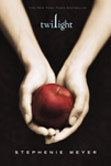 Some Britons may have come to regret their queen-bashing, flower-tossing, and mile-long queues to sign her “Book of Remembrance,” but for many, Peter Singer points out in a recent column, Diana has become something akin to a saint.
Some Britons may have come to regret their queen-bashing, flower-tossing, and mile-long queues to sign her “Book of Remembrance,” but for many, Peter Singer points out in a recent column, Diana has become something akin to a saint.
“Some had a ‘Diana room’ in their homes, filled with memorabilia of the princess,” he writes of Diana fans he encountered at the opening of the Princess Diana Memorial Fountain in London in 2004. “Their lives, it seemed, now revolved around a woman who had been dead for seven years.” From the near mythic rumors about the circumstances of her death to sculptures portraying her as the Virgin Mary, Diana worship, says Singer, a professor of bioethics at Princeton University, “as absurd as any cult.”
Absurd, maybe, but the canonization of Diana goes on.
In an article in Britain’s Daily Telegraph headlined “Diana’s presence felt from beyond the grave,” Jan Moir remembers “the pilgrims who lit candles and brought flowers, who prayed and cried endlessly. They reminded me of a trip to Umbria, where thousands of women travel every week to pay homage at the shrine of St Rita of Cascia, the patron saint of impossible causes and damaged wives.”
Time magazine contrasts her to other immortal icons, like Elvis and Marilyn Monroe, by saying, “People knew her as a royal, a mother, a humanitarian and–many thought–a saint.” A website, obviously of recent vintage, just gets it over with: saintdiana.com.
Those who reject the idea of Saint Diana seem to hold her in higher esteem than those who lean hard on the metaphor. Singer points out that Diana did a lot of good while alive by attracting attention to causes like AIDS and the removal of landmines left behind by war. But another Time writer this week ungenerously claims that, in view of her adulterous affairs and her inevitable descent into age and Botox, “her death was a fateful gift: providing her with the halo of martyrdom.” If that’s what sainthood gets you these days, I’d rather be remembered as a sinner.


